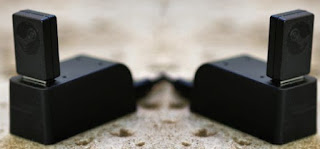
Step 1: Open
up “My Computer”.
All we have done so far is tell your computer how you want
to handle the USB Drive. In order to achieve much faster speeds, we need to
actually format the USB drive.
Note: Before you format your USB drive, BACKUP all your
files on the USB drive. Formatting will permanently erase all your files on the
drive!
Step 1: Open
up “My Computer”.
Step 2: Right-Click
your desired Flash drive, then select “Properties” from the popup window.
Step 3: Find
and click the “Hardware” tab.
Step 4: Select
your USB drive again from the list of available drives.
Step 5: Once
your drive is selected, hit the “Properties” button near the lower-right corner
of your menu.
Step 6: Click
on the “Policies” Tab.
Step 7: Select
“Optimize for Performance”.
Step 8: Click
“OK” to finish the optimization.
All we have done so far is tell your computer how you want
to handle the USB Drive. In order to achieve much faster speeds, we need to
actually format the USB drive.
Note: Before you format your USB drive, BACKUP all your files on the USB drive. Formatting will permanently erase all your files on the drive!

Comments
Post a Comment